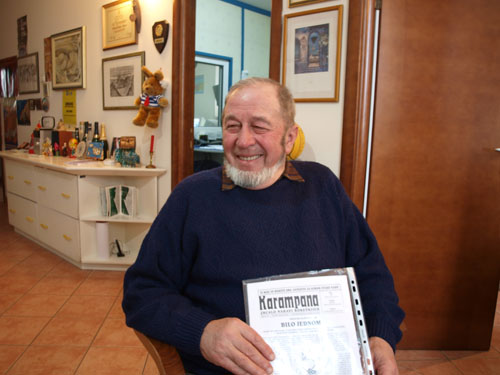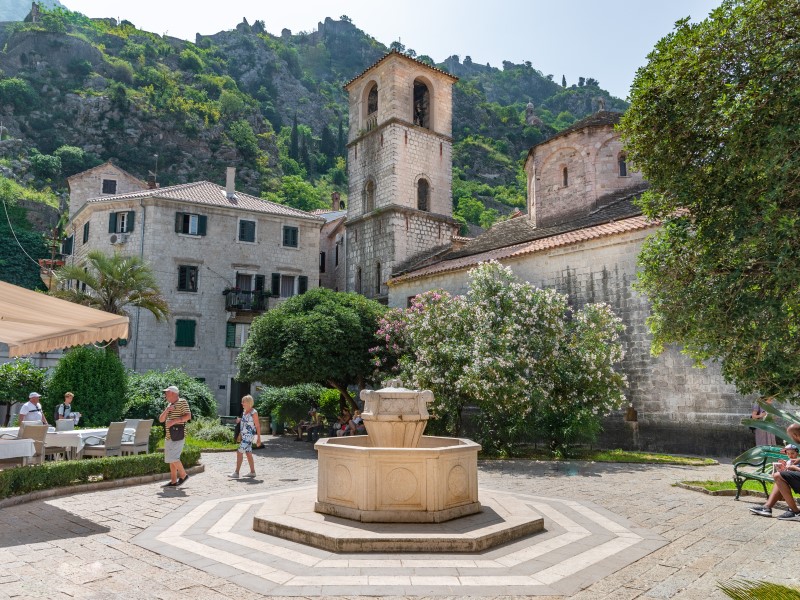Kotor – Montenegro’s gate to Europe
Archaeologist and polyglot, author of numerous articles, discussions and books in the field of archeology, maritime affairs and medieval history
By Veliborka Dragomanović
We asked Jovan what sets Kotor apart from other cities. The specificity of the moment we are in, as well as the awareness of the need to dedicate ourselves even more to the preservation and promotion of cultural and historical heritage, led us to ask our interlocutor to tell us how the tourist offer in our city could be improved.

Former director of the Maritime Museum, and member of numerous institutions in the field of archeology and museology, member of the Board for Archeology of the Montenegrin Academy of Sciences and Arts.
Jovan Martinović participated in archeological excavations in northern and central Dalmatia, and later on the Montenegrin coast, prehistoric site in Carine, and mosaics in Risan, as well as in the cave Spila above Perast. He organised and coordinated work of numerous institutions that participated in renovation and revitalisation of monuments damaged in devastating earthquake in 1979 in Kotor, and other areas of the municipality as well.
Especially significant were his discoveries of an early Christian basilica below the church of St. Mary of the River in Kotor, as well as the findings of a pre-Romanesque church-martyrdom next to the Cathedral of St. Tryphon in Kotor. He was the official head of the research of the Eneolithic and Bronze Age tumulus Velika Gruda in Grbalj, with findings of international importance. He also participated in the implementation of the archeological project “Risan, the capital of Queen Teuta” organised by the Regional Institute of Kotor, and the Archaeological Institute of the University of Warsaw.

Kotor is the only urban-type settlement in Montenegro with archeologically and archival documented history from the 6th century to the present day. It is a city that developed on the principles of internal self-government in terms of medieval communes, but almost always under the patronage of a strong external protector. Also, a city with a complete preserved Statute whose oldest chapter dates from the beginning of the XIV century, and the one with a strongly developed overseas trade. Its literature and art influences reached deep into the interior of the country, which was at a lower stage of development than Romanesque cities on the coast.
Development of Kotor as a modern city was limited due to the narrow space in which it was set, and then drastically interrupted due to the devastating earthquake in 1979. after which most of the funds raised was used for the reconstruction of infrastructure, housing, health and the like. These funds were used very rationally. Restoration of endangered monuments was carried out according to the best requirements of the professio. However, almost nothing has been done to fully protect the largest and most important fortification complex in the Mediterranean – the fortress on the hill and the ramparts around the historic core of the city.
From the very beginning, there was an idea to form a smaller masonry team that would work on cleaning, consolidation and maintenance of walls and ramparts, whose activities would be financed from funds from tickets to the ramparts. However, real and definitive protection could be achieved only by establishing a special institution for managing the ramparts and the entire fortress, which could also receive EU funds dedicated to the protection of European fortress complexes, such as those the people of Dubrovnik used to protect the fortifications of Ston. We are aware that the NGO Expeditio has made a very solid plan for the protection of the fortress and ramparts of Kotor, which could be used for this purpose. “



